How the creators of GTA swapped city streets for school beats in Bully: Scholarship Edition
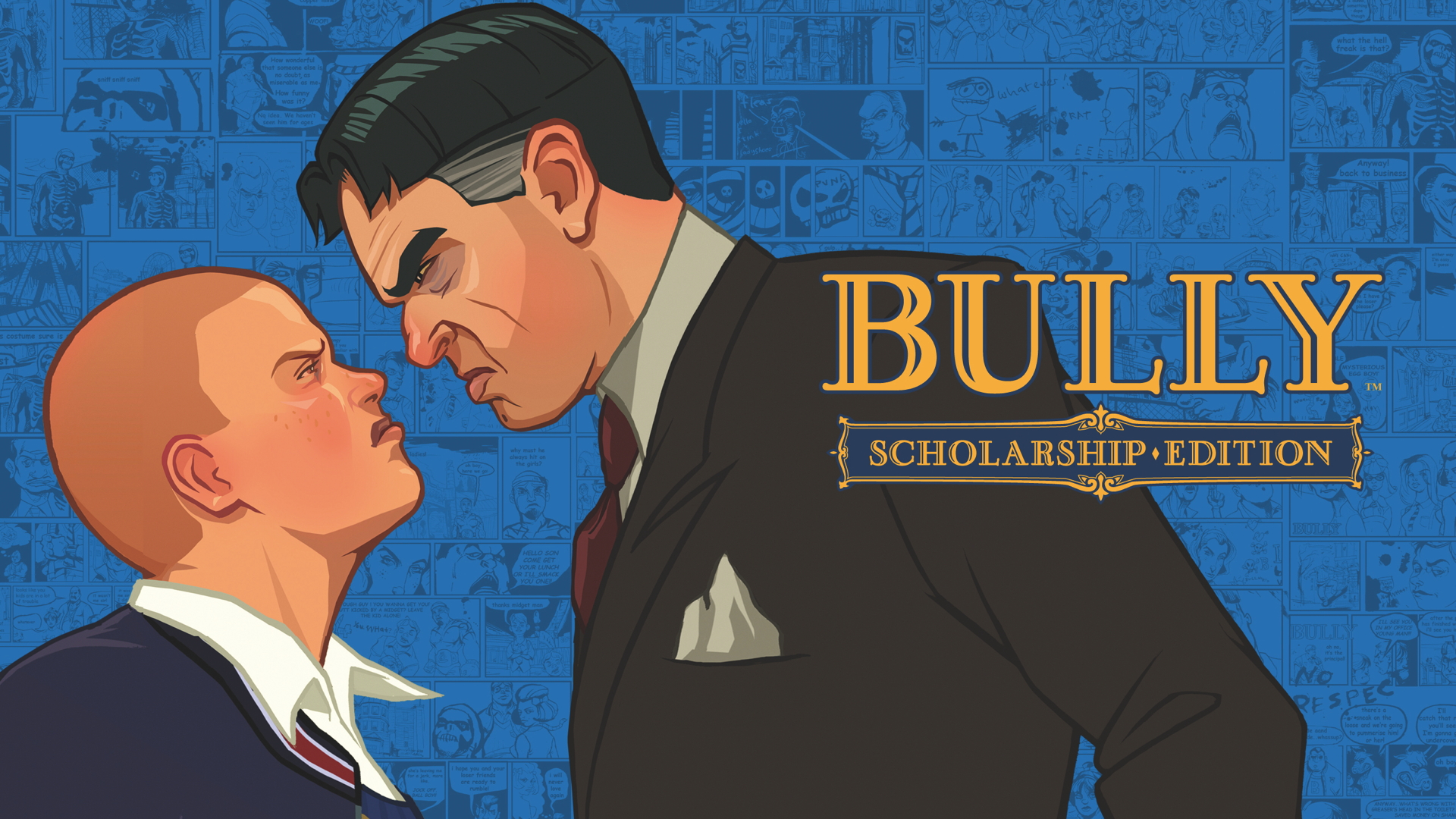
The Grand Theft Auto games are absolutely packed with bastards, and deliberately so. Even at their most affable, protagonists like GTA IV’s reluctant gangster Niko Bellic or GTA V’s psychopathic man-child Trevor Philips can only win you over so much when they’re blowing up cars with remote charges or running over countless civilians for their own sadistic kicks.
In Bully, which came to Xbox 360 in 2008 as an enhanced edition of the 2006 PS2 game, Rockstar finally got to show off how capable it was at making good-hearted underdogs. It’s a bit like GTA but set in a school, in the way that Red Dead is like GTA set in the Wild West: the basic principles of exploring an open-world and hitting mission markers are there, but Bully very much has its own tone.
It may not be Rockstar’s best game, but the choice of setting and array of characters makes it the most memorable. You play young Jimmy Hopkins, abandoned at the gates of Bullworth Academy by his uninterested mother, and forced to fit into this school of clashing subcultures and total maniacs. The academy’s crest says canis canem edit – basically, dog eat dog. The game is set inside the school’s campus and the surrounding fictional town of Bullworth in New Hampshire. Unlike GTA, Bullworth isn’t a condensed replica of a real place. It’s a charmingly subdued American town that feels to scale, although the academy itself looks oddly like a British boarding school.
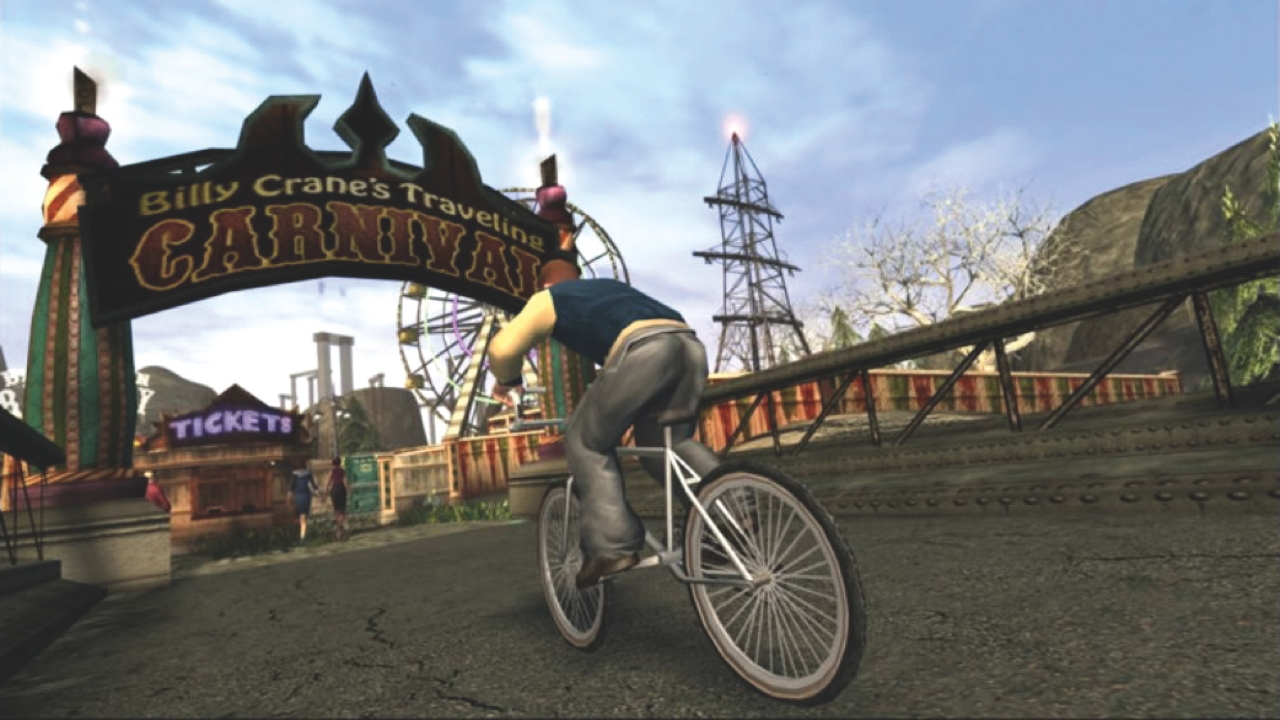
You’re not stealing cars and running people over in Bully – you’re riding your BMX or skating through Bullworth’s four neighbourhoods. That makes it feel more intimate than most sandbox settings. The school’s campus has a gym, a football pitch and lodgings for the students. Downtown has a carnival, a shopping district, a weathered industrial zone and even a secret shipwreck out in the bay. It’s a pleasant and relaxed locale to potter around in, helped enormously by an unusual and catchy orchestral score by Shawn Lee.
The mission structure is largely borrowed from GTA, and sees you performing odd jobs for the school’s many students, and sometimes even its troubled teachers. Jimmy’s goal is initially just to survive. At the start, pretty much every bully shoves him or calls him names as you navigate through the grounds. Over the course of the story, this changes.
The school is divided into different factions. You have the ‘80s movie-style nerds, for example, or the greasers who have a James Dean aesthetic, or the insufferably posh preppies, who Jimmy perceptively describes as “massively inbred and completely brainless”. There’s a tension between each group, and depending on the mission you’re doing, their respect for Jimmy will either increase or decrease. Doing a favour for the nerds can improve their opinion of you, but their opposing group, the jocks, are likely to hate you more because of it. This sells the idea that your place in Bullworth’s food chain changes over the course of the school year.
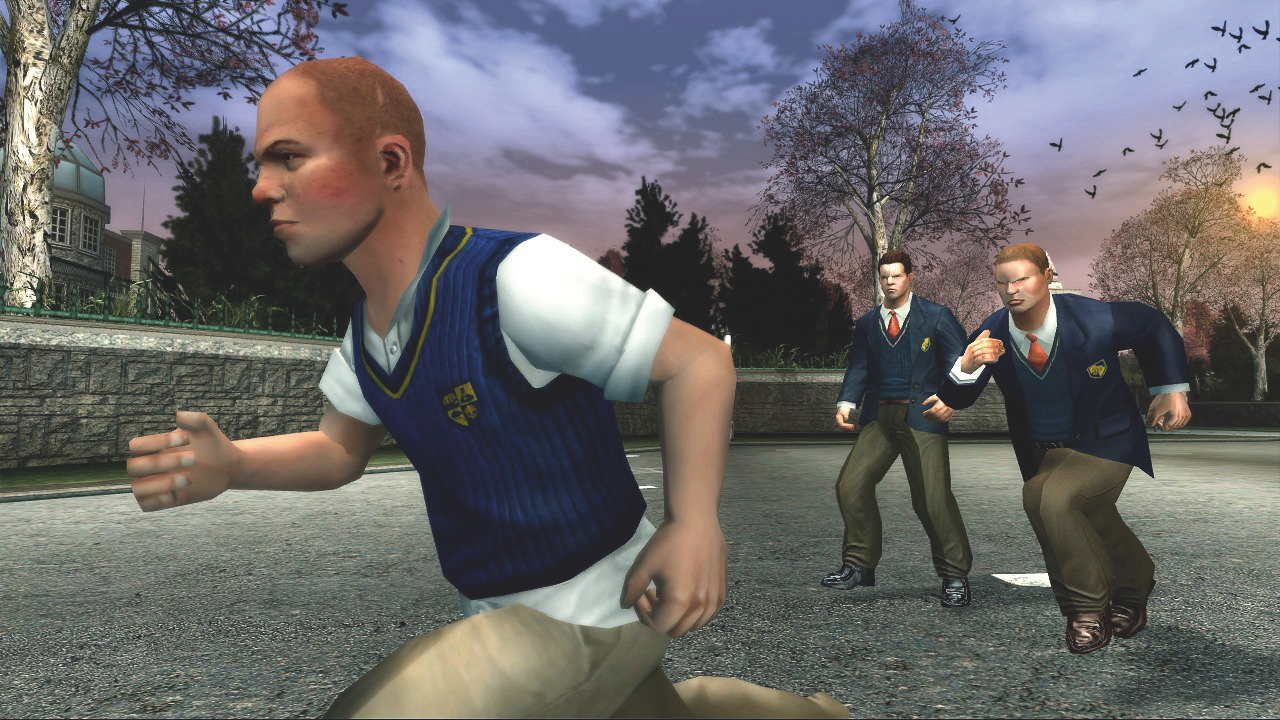
Bully is a funny game. It’s not about how school actually was; it’s a slightly fantastical alternate reality where bullies always get their just desserts, or where posh kids get their houses egged for being dicks. The teenagers at Bullworth are a mixture of the ruthless, the overly sincere, the incredibly mean and the bafflingly insecure – they’re real teenagers, basically. But it’s all played for laughs. The kids that surround Jimmy are mostly charming or entertaining, even the badly behaved ones.
Sign up to the GamesRadar+ Newsletter
Weekly digests, tales from the communities you love, and more
It’s school life by way of American pop culture, with the exaggerated cliques and cartoonish personalities you’ve seen in countless films and TV shows, and it’s a ton of fun as window dressing for an open-world game. This is a genre we now largely associate with crime, history or fantasy, partly as a result of Rockstar’s own success, so it’s refreshing to step into something different. Bully is a true original, though it takes storytelling cues from ‘80s game Skool Daze on the Spectrum and Commodore 64.
The story spans the entire school year, including Halloween and Christmas. In the former case, that means the students dress up in costume for one night, including Jimmy. During winter, Rockstar Vancouver takes the bold step of covering the entire town in snow, which is an incredibly evocative way to show the passage of time. School lessons are represented by mini-games, which vary between slightly boring button prompt challenges and more inventive, novel asides, like English, where you’re tasked with making as many words from a set of letters as you can within a time limit.

Completing lessons gets you extra abilities or items. Science unlocks firecrackers, which can knock out a student or prefect (Bullworth’s version of the secret police), as well as itching powder and stink bombs. If GCSE Science lessons had taught me such things, I’d have done more than stare at a wall for years. Collectively, it feels like you’re actually a student living a year at school, which shouldn’t be nearly as enjoyable.
There are plenty of reminders you’re a kid rather than a typical game hero. You get detention for misbehaving (note: don’t shoot potatoes at small children), and in a sweet touch, Jimmy has to go to bed by 2AM or he falls asleep on the spot. The most illegal thing you can do in Bully is drive a scooter into someone, or knock over a portable toilet while the particularly vile gym teacher, Mr Burton, is taking a poo inside. It’s not exactly shooting a blimp down from the Los Santos skyline with a rocket launcher, is it? Bully is just a riot – the way the setting opens up keeps the missions varied, and it benefits from being significantly shorter than any GTA.
Jimmy is also a solid underdog protagonist. You want him to triumph over Bullworth’s elite because he’s underestimated by everyone around him, including his mum and the school’s self-important principal, Dr Crabblesnitch. But a more interesting presence in Bully is that of Gary, a paranoid sociopath who Jimmy meets early on and later becomes the story’s main villain as he tries to take over the school. Gary constantly undermines the confidence of Petey, a timid kid in your dorm, and he gets an obvious kick out of causing fights between the school’s different factions. He frequently taunts Jimmy, and when he asks Gary what his problem is, he responds with, “ADD, primarily, but also life, my parents, this school, Western civilisation...” He’s a brilliantly written and acted creation. Gary is on the fringe of the school’s social strata, and while he loves being the arbiter of chaos, he does so by manipulating other people (including Jimmy, initially) into getting their hands dirty on his behalf.
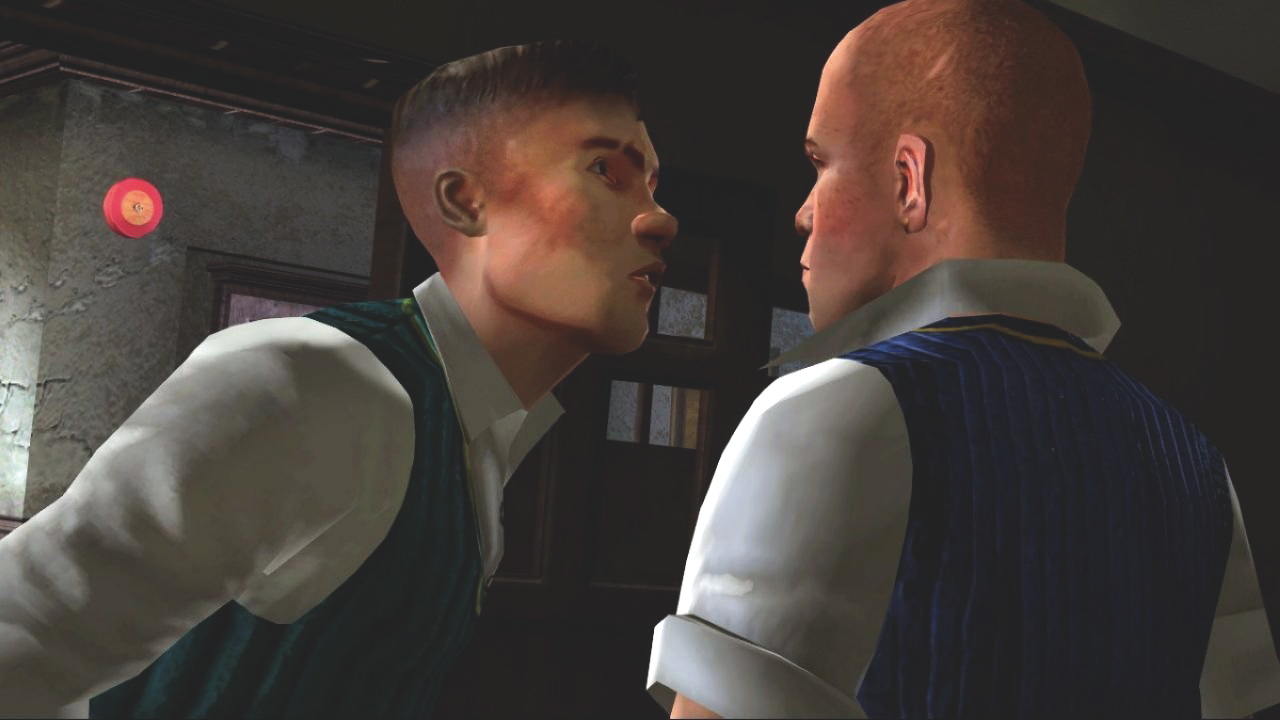
It’s rare for me to write about a game and find so much to say about the setting and characters. These are the reasons I still revisit Bully every couple of years, though – whenever I talk to a friend about this particular game, we usually discuss Jimmy, Gary or a part of the town we enjoyed exploring. I don’t return to it for the melee combat, which is satisfyingly crunchy even if it feels a little outdated in the wake of the Arkham games, or the weapons, which can be awkward to aim but offer plenty of fun ways to mess with the other kids.
The secret to Bully’s success, I think, is that it’s surprisingly warm and sincere – you’ll find moments like that in Rockstar’s games, but they’re usually fleeting, like John Marston’s interactions with his family in Red Dead Redemption, or Trevor and Michael’s rare moments of genuine friendship peppered throughout their exhausting antagonism in GTA V. Bully is only ever cheeky rather than cruel. No one dies. The only stakes are getting expelled, or being forced to cut the grass after school (which is still a bit lame, I’ll admit).
The reality of going to school is usually pretty crappy, but Bully casts you as someone with a strong moral compass who essentially rights all of Bullworth’s wrongs over the course of the game. Jimmy can also spend time just enjoying his youth, as the developers allow the fleeting magic of adolescence to ebb into the game. For example, Jimmy can give chocolates or flowers to different students in order to win their affections, which comes across as cute instead of super creepy.
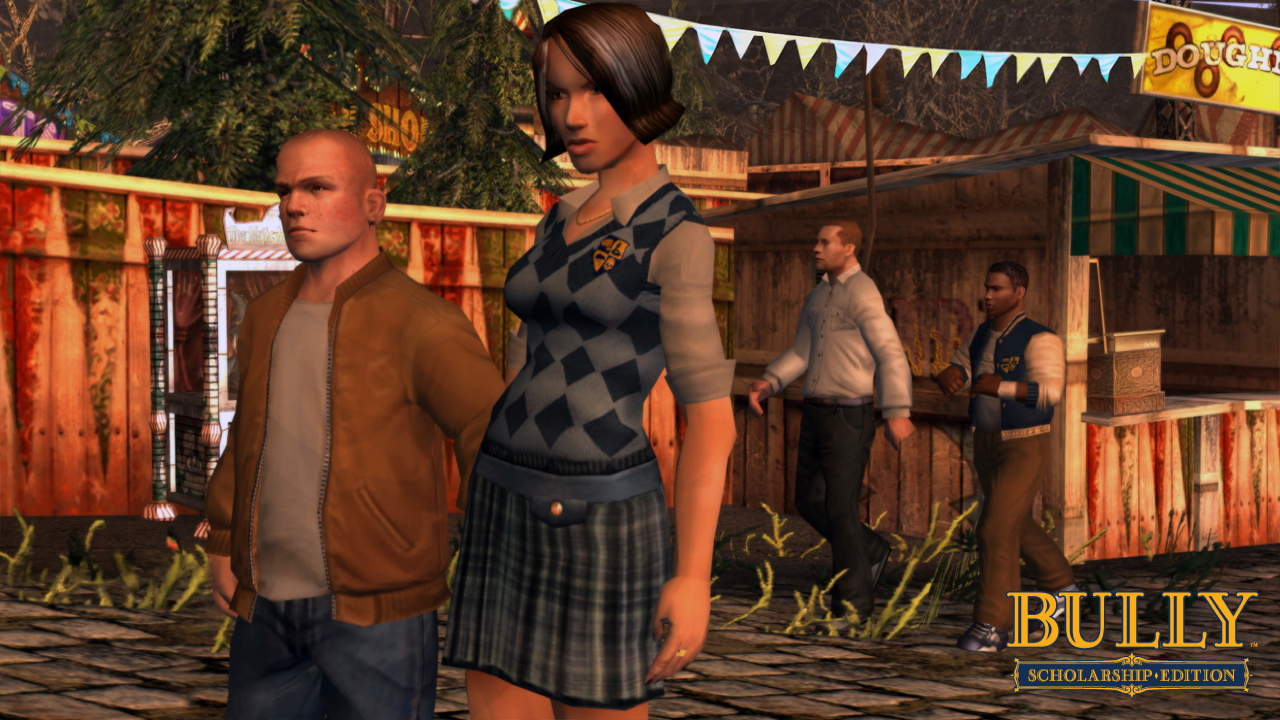
In one mission, Jimmy goes on a carnival date with Pinky, another student who’s been stood up, and they hold hands while you try to get the best score at all of the games. There’s a pirate hidden away somewhere in the bay, too, and a comic-book shop where Jimmy can seek refuge. Collecting all the rubber bands around Bullworth gets you the brutal, crowd-demolishing rubber band ball, which pretty much becomes Jimmy’s ultimate weapon.
If you’re playing it for the first time through the Xbox One’s backwards compatibility, there’s definitely no hiding this game’s origins on ancient consoles. Compared to Quantum Break or GTAV’s cutscenes, Bully’s characters are very much meat puppets in the way they’re animated, even thought he voice acting is uniformly excellent. It’s definitely where the game’s age shows the most, and for some players it might just look too old to enjoy now. Likewise, the Scholarship Edition that came to Xbox 360 still has some glitchy lighting and moments of slowdown. But it’s well worth putting up with for what is the most offbeat game of Rockstar’s back catalogue.
The subject matter is just such an original choice, executed in a bunch of clever and interesting ways. We’re so used to heightened or impossible situations in the big games we play, that the idea of playing as a kid in a school seems so tame by comparison. But this is what happens when Rockstar swaps the grandeur of enormous open-worlds for sleepier surroundings, and trades wisecracking murderers for mouthy teenagers – it showcases its ability to create virtual worlds, as well as the people that populate them.
This article originally appeared in Xbox: The Official Magazine. For more great Xbox coverage, you can subscribe here.
Samuel is now a PR Manager at Frontier Development, but was once a staffer at Future PLC. He was last the Entertainment Editor at TechRadar, but before that he was the UK Editor at PC Gamer. He has also written for GamesRadar in his time. He is also the co-host of the Backpage podcast.


